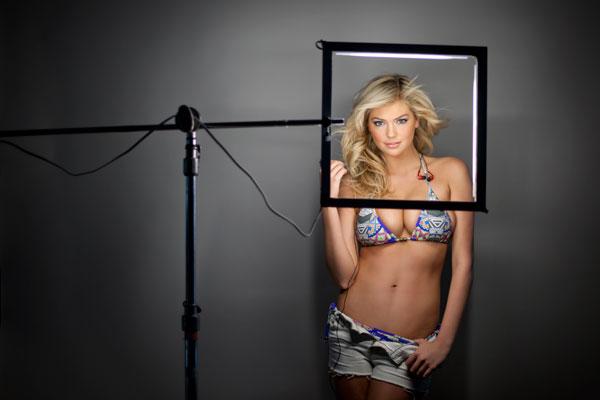
On March 23, 2012, SkullCandy released their latest financials with some interesting results that also say a great deal about the designer headphone industry, where music’s headed in terms of listening devices, and the challenges the industry as a whole has in the coming year.
First, SkullCandy increased net sales from $9.1 million in 2006 to $232.5 million in 2011, representing an annual growth rate of approximately 91%. Known for endorsing action sports athletes, artists, and musicians, the name quickly became affixed with elements of leading-edge subcultures and credible scenes. With the award-winning Roc Nation Aviator, sported by Jay-Z to the break-out of new types of earbuds, the brand went richter over a span of 5 years and filed for an IPO last year.
There were many reasons for their success. They tapped into the crossover of technology accessories as fashion, and stepped right into the growing market of Apple’s success with iPods and growing demand of consumers playing music via their cell phones (iPhones and Android). Like many fashion brands particularly around action sports, music accessories like designer headphones became an important and growing category of their accessory merchandising. Brands such as Beats by Dr. Dre, Incase, Urbanears, Soul by Ludacris, Sol Republic and SMS Audio, to name a few have tapped into this category that was once reserved for music and electronic companies. Other competitions comes from collaborations, such as adidas X Sennheiser, an electronics company, and WESC which has been creating designer headphones for years.
Sales through Zumiez and Tilly’s, mostly known for action sports, were only a part of the distribution picture. Best Buy, Radio Shack, and Target have actually been even more important. Target and Best Buy each accounted for more than 10% of SkullCandy’s net sales in 2010. Best Buy continued to account for more than 10% of net sales in 2011. Interestingly, while the growing category across the board for many designer headphones in is online, in 2011, this presented only 9.7% of SkullCandy’s net sales.
Some telling aspects of the report came about when talking about manufacturing and inventory. Nearly all of SkullCandy’s products are manufactured by 2 key companies in China, none of which SkullCandy actually owns. There’s also been an increase lead-time from some of their manufacturers in China and due to economic conditions, potential volatility in costs of production. SkullCandy reported looking for more manufacturing sources in other countries and other regions of China.
When it comes to Europe, which is where much of their expansion has also taken place, there are other elements that SkullCandy is dealing with:
“Over time, we plan to assume direct control of certain international markets, which will require increased operating expenditures to establish the infrastructure. On August 26, 2011, we completed the purchase of all outstanding stock of Kungsbacka 57 AB, a subsidiary of 57 North AB. Kungsbacka 57 AB previously held an exclusive distribution agreement for Skullcandy products in Europe through November of 2013. As a result of the acquisition, we are now responsible for distribution of our products in Europe.”
However, SkullCandy goes on to admit that they have limited experience with international distribution and “cannot assure you that we will be able to manage European distribution successfully or that the same marketing model we use domestically. If we are not able to manage our international distribution efficiently, our international retailers and distributors may experience delays in receipt of our products and we may have to find alternate distribution arrangements, which could result in increased expenditures and a reduction in margins.”
On March 29, 2011, Volcom filed a complaint in the U.S. District Court, Central District of California, alleging that, among other things, RocNation’s logo infringes the Volcom stone logo.
SkullCandy’s response: “While we were not named in the complaint, our Aviator headphones carry the RocNation logo that is alleged to infringe the Volcom logo. We cannot assure you that we will not be subsequently named by Volcom in its complaint. Moreover, even if we are not named, if RocNation fails to successfully defend itself against Volcom in this matter, we could lose our ability to use the RocNation logo on our Aviator headphones and we may have to take action to modify our existing supply of Aviator headphones, either of which could have a material impact on sales of the Aviator headphone. Pursuant to our license agreement with RocNation we are indemnified for any claims alleging violation or infringement of any copyright, trademark or other intellectual property right arising out of our use of the RocNation logo.”
Finally, there’s a blessing and a curse to being publically traded. SkullCandy said, “Our management team has limited experience managing a publicly-traded company or complying with the increasingly complex laws pertaining to public companies. In particular, our chief executive officer has not previously managed a publicly-traded company. In addition, most of our current directors have limited experience serving on the boards of public companies and two directors joined our board of directors in 2011.”
Being publically traded also means that everything’s out on the table. Anyone can read where the brand’s headed and what decisions are being made. In many cases, it also provides insight on where a market is headed, especially when it comes to relatively new markets like designer headphones. As a leader in this category, watching what takes place with SkullCandy provides a good indicator of changes in the marketplace, and various crossover industries.


